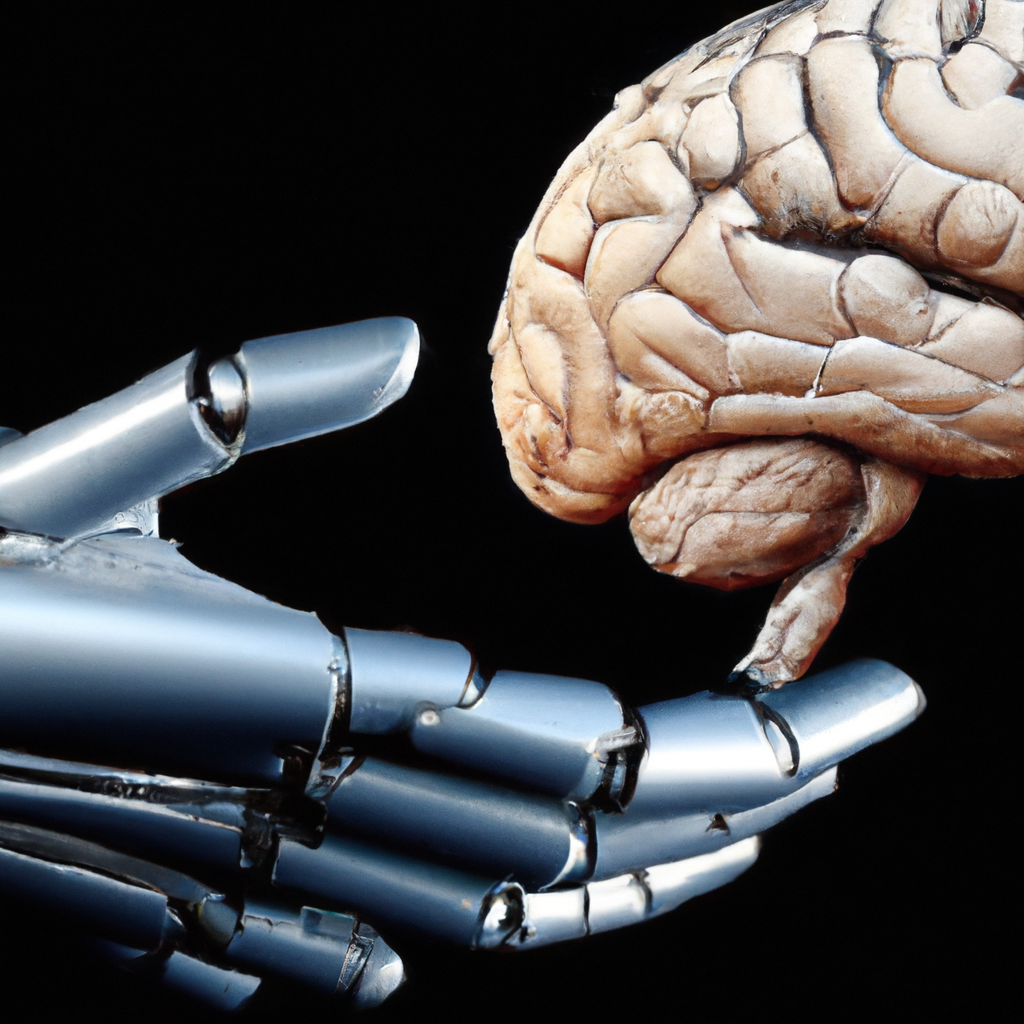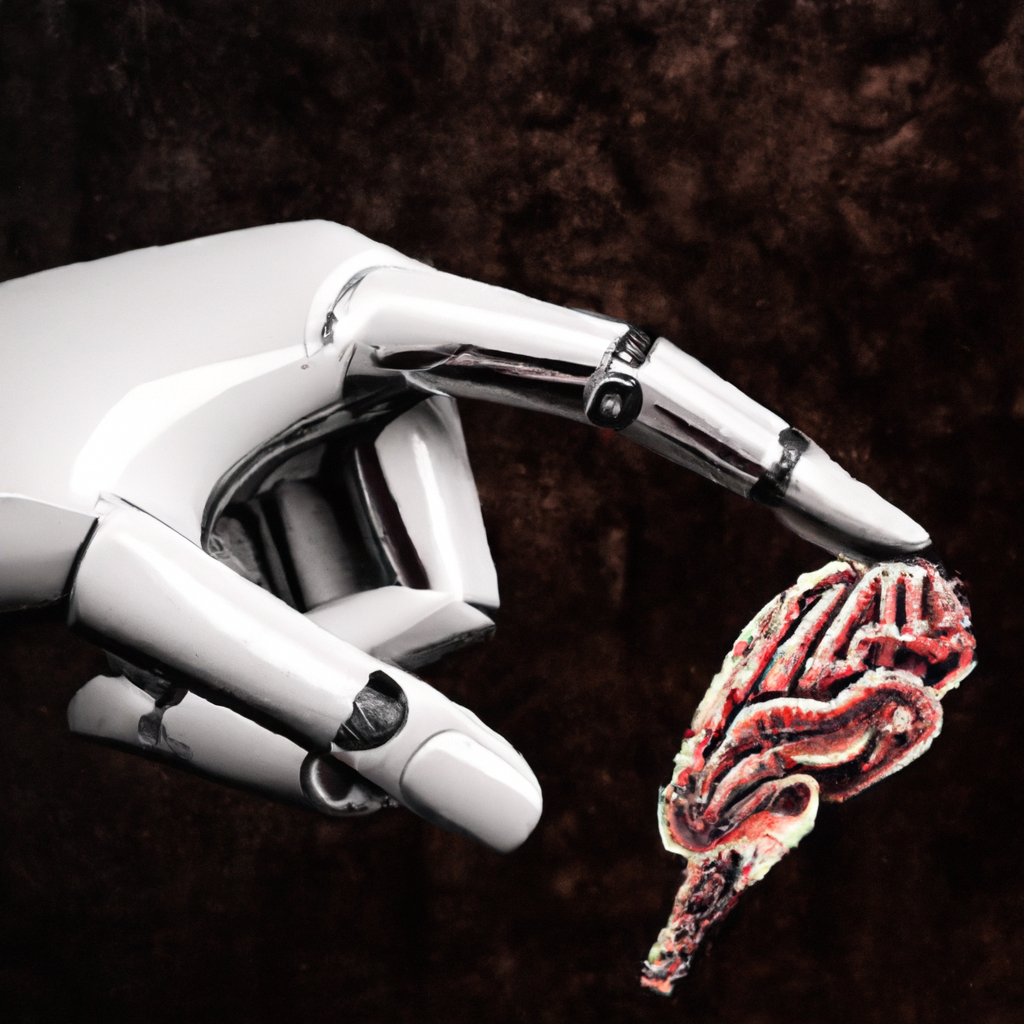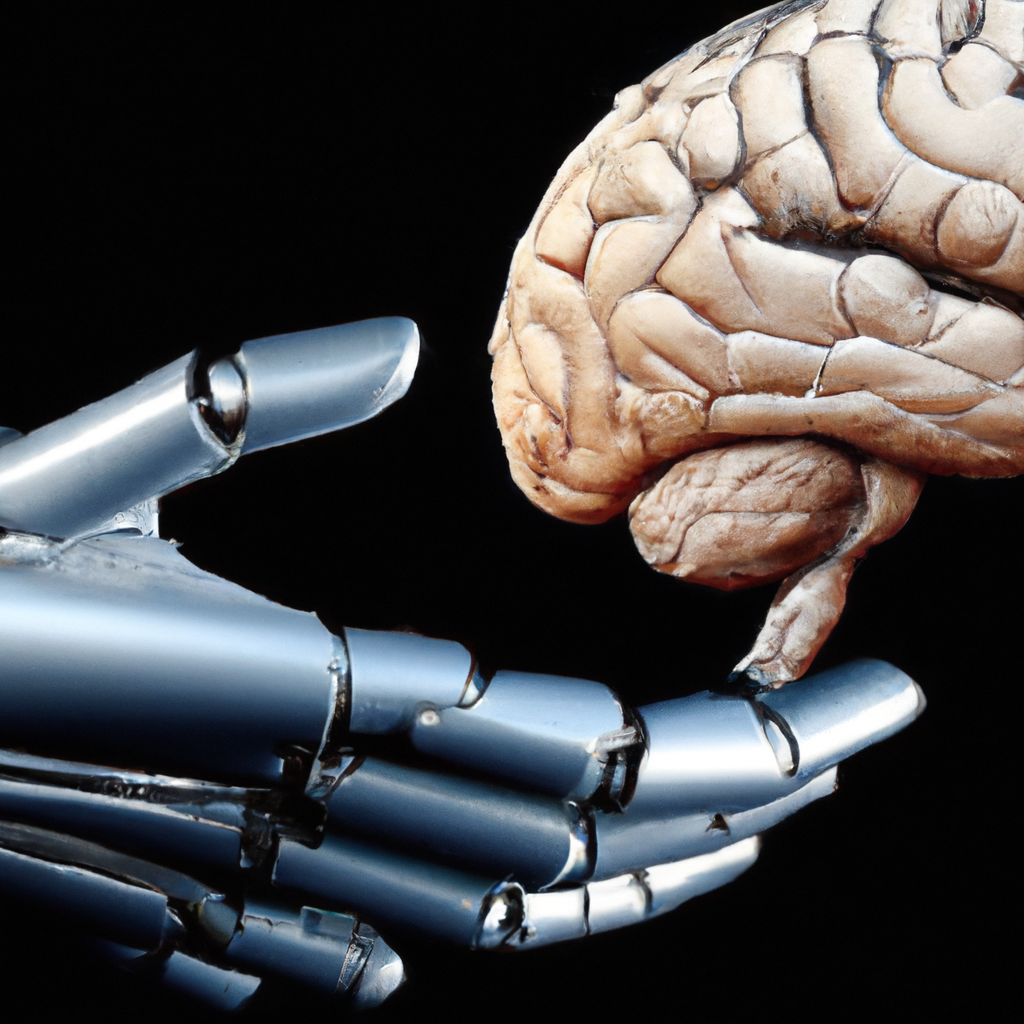AI For Experts: The Latest Advances In Artificial Intelligence Research

In the rapidly evolving field of artificial intelligence, staying informed about the latest advances is crucial for experts seeking to push the boundaries of AI research. With the explosive growth of data and computing power, groundbreaking developments are constantly emerging, reshaping the landscape of AI. From deep learning algorithms to computer vision systems, this article delves into the cutting-edge technologies driving the field forward, shedding light on the exciting possibilities that lie ahead. So, get ready to explore the fascinating world of AI and discover the latest advancements that are revolutionizing the way we think about intelligent machines.

1. Machine Learning
Machine learning is a subfield of artificial intelligence (AI) that focuses on creating systems and algorithms that can learn from data without being explicitly programmed. It involves training models on large datasets, allowing them to make predictions or take actions based on patterns and trends found in the data. There are several types of machine learning, including supervised, unsupervised, and reinforcement learning.
1.1 Supervised Learning
Supervised learning is a type of machine learning where models are trained using labeled data. The goal is to learn a mapping between input variables (features) and output variables (labels) based on the given training examples. The model learns to make predictions by generalizing patterns from the labeled data. Popular techniques in supervised learning include linear regression, decision trees, and support vector machines.
1.2 Unsupervised Learning
Unsupervised learning, on the other hand, involves training models on unlabeled data. The goal is to discover and understand the underlying structure or patterns in the data without any prior knowledge of the labels. This type of learning is particularly useful when the data is unstructured or when there are no predefined classes or labels. Common techniques used in unsupervised learning include clustering algorithms (k-means clustering, hierarchical clustering) and dimensionality reduction techniques (principal component analysis, t-SNE).
1.3 Reinforcement Learning
Reinforcement learning is a type of machine learning where an agent learns to interact with an environment and maximize its rewards through trial and error. The agent receives feedback in the form of rewards or punishments based on its actions, allowing it to learn which actions lead to positive outcomes and which ones should be avoided. Reinforcement learning has been successfully applied to various domains, such as robotics, game playing, and autonomous vehicles.
2. Deep Learning
Deep learning is a subset of machine learning that focuses on training artificial neural networks with multiple layers. These neural networks, also known as deep neural networks, are inspired by the structure and functioning of the human brain. Deep learning has gained significant attention in recent years due to its ability to solve complex problems and achieve state-of-the-art results in various domains.
2.1 Neural Networks
Neural networks are the building blocks of deep learning. They consist of interconnected nodes, or artificial neurons, organized in layers. Each node receives input signals, applies a mathematical operation to them, and produces an output signal. The connections between the nodes are assigned weights, which determine the strength of the signal passing through them. By adjusting the weights, neural networks can learn to make accurate predictions or classifications.
2.2 Convolutional Neural Networks (CNN)
Convolutional neural networks (CNN) are a type of neural network commonly used in computer vision tasks. They are designed to automatically and adaptively learn hierarchical representations from visual data. CNNs consist of multiple layers, including convolutional layers that apply a set of learnable filters to the input, pooling layers that reduce the spatial dimensions of the data, and fully connected layers that make the final predictions or classifications.
2.3 Recurrent Neural Networks (RNN)
Recurrent neural networks (RNN) are neural networks that can process sequential data by retaining information from previous steps. They have a recurrent connection, allowing them to pass information from one step to another. RNNs are particularly suitable for tasks such as language modeling, speech recognition, and machine translation, where the input data has a temporal or sequential nature.
2.4 Generative Adversarial Networks (GANs)
Generative adversarial networks (GANs) are a type of neural network architecture that consists of two components: a generator and a discriminator. The generator tries to generate realistic samples, such as images or text, while the discriminator tries to distinguish between real and generated samples. The two components compete against each other, with the generator aiming to generate samples that are indistinguishable from real ones. GANs have been successful in tasks such as image synthesis, text generation, and video generation.
3. Natural Language Processing (NLP)
Natural Language Processing (NLP) is a field of study that focuses on the interaction between humans and computers through natural language. NLP techniques enable computers to understand, interpret, and generate human language. It has applications in various domains, including sentiment analysis, language translation, and text generation.
3.1 Sentiment Analysis
Sentiment analysis, also known as opinion mining, is the process of determining the sentiment or emotion expressed in a piece of text. By analyzing the words, phrases, and context used in the text, sentiment analysis algorithms can classify the sentiment as positive, negative, or neutral. This technique has applications in social media monitoring, customer feedback analysis, and brand reputation management.
3.2 Language Translation
Language translation involves automatically translating text from one language to another. Machine translation techniques have evolved significantly with the advent of deep learning, particularly with the use of recurrent neural networks and attention mechanisms. These techniques allow models to learn the semantic and syntactic relationships between words and translate sentences more accurately. Language translation systems are widely used in applications such as online translation services, multilingual chatbots, and content localization.
3.3 Text Generation
Text generation techniques aim to automatically generate human-like text based on a given prompt or context. These techniques have seen significant advancements with the use of deep learning and recurrent neural networks, particularly in the field of natural language generation. Text generation models can be used for tasks such as chatbot responses, content creation, and dialogue generation in virtual environments.

4. Computer Vision
Computer vision is a field of study that focuses on enabling computers to understand and interpret visual information from the real world. It involves the development of algorithms and techniques for tasks such as object detection, image segmentation, and image classification.
4.1 Object Detection
Object detection is the task of locating and classifying objects within an image or video. It involves identifying the presence and location of multiple objects in a scene, as well as assigning a class label to each object. Object detection algorithms are crucial in applications such as autonomous driving, surveillance systems, and robotics.
4.2 Image Segmentation
Image segmentation aims to divide an image into multiple segments or regions, typically based on similarities in color, texture, or other visual characteristics. This technique allows computers to identify and differentiate different objects or regions within an image. Image segmentation has applications in medical imaging, object recognition, and scene understanding.
4.3 Image Classification
Image classification is the task of assigning an image to a predefined class or category. It involves training models on labeled images and teaching them to recognize and classify unseen images based on the learned patterns and features. Image classification is widely used in various applications, including content-based image retrieval, autonomous driving, and quality control in manufacturing.
5. Robotics and AI
Robotics and AI are closely related fields that aim to create intelligent machines capable of performing tasks without human intervention. The combination of AI techniques and robotics has the potential to revolutionize various industries, from manufacturing and healthcare to transportation and entertainment.
5.1 Autonomous Robots
Autonomous robots are robots that can perform tasks or actions without human intervention. They rely on sensors, actuators, and AI algorithms to perceive and interact with their environment, make decisions, and carry out tasks. Autonomous robots have applications in industries such as agriculture, logistics, and search and rescue.
5.2 Human-Robot Interaction
Human-robot interaction focuses on designing robots that can communicate and collaborate with humans effectively. This field explores various aspects of communication, including speech recognition, gesture recognition, and natural language understanding. Human-robot interaction research aims to create robots that can understand and respond to human commands and engage in seamless interactions with humans.
5.3 Robot Learning
Robot learning involves enabling robots to acquire new skills and knowledge through experience. It encompasses various learning paradigms, including imitation learning, reinforcement learning, and unsupervised learning. Robot learning allows robots to adapt to changing environments, learn from human demonstrations, and continuously improve their performance in specific tasks.
6. Explainable AI
Explainable AI is a field of research that focuses on developing AI models and techniques that can provide explanations for their predictions and decisions. While deep learning models have achieved impressive performance in various domains, they often lack interpretability, making it challenging to understand the reasoning behind their predictions. Explainable AI aims to bridge this gap by providing insights into how models arrive at their conclusions.
6.1 Interpretable Machine Learning
Interpretable machine learning focuses on developing models that are inherently interpretable and can provide understandable explanations for their predictions. This involves using transparent algorithms and techniques, such as decision trees and rule-based systems, that can explicitly show the logic and rules used in the decision-making process. Interpretable machine learning is crucial in domains such as healthcare, finance, and legal systems, where accountability and transparency are essential.
6.2 Model-Based Explainability
Model-based explainability approaches aim to understand and explain AI models by analyzing their internal structure and components. These approaches involve techniques such as feature importance analysis, neural network visualization, and sensitivity analysis. By examining how different features and neurons contribute to the model’s predictions, researchers can gain insights into the model’s behavior and provide explanations for its decisions.
6.3 Rule-Based Approaches
Rule-based approaches involve explicitly encoding domain-specific rules and knowledge into AI models. These models use predefined rules and logical reasoning to make decisions and provide explanations for their actions. Rule-based AI systems are widely used in expert systems, where human expertise and knowledge can be effectively incorporated into the decision-making process. Rule-based approaches can enhance the transparency and explainability of AI systems, particularly in critical domains where trust is paramount.
7. Knowledge Graphs
Knowledge graphs are database-like structures that organize and represent knowledge in a structured manner. They consist of nodes, which represent entities or concepts, and edges, which represent the relationships or connections between the entities. Knowledge graphs enable machines to reason about and understand complex relationships and dependencies between different entities.
7.1 Knowledge Representation
Knowledge representation is the process of capturing and organizing human knowledge in a structured format that can be understood and processed by machines. Knowledge graphs play a crucial role in knowledge representation as they provide a structured framework for representing and modeling knowledge. Knowledge representation techniques allow machines to reason, infer, and make logical deductions based on the information stored in the knowledge graph.
7.2 Semantic Reasoning
Semantic reasoning involves using logical rules and inference techniques to derive new knowledge from existing knowledge in the knowledge graph. By applying semantic reasoning algorithms, machines can discover previously unknown relationships between entities, make logical deductions, and infer missing information. Semantic reasoning enhances the capabilities of knowledge graphs and enables machines to perform advanced reasoning tasks.
7.3 Ontology Engineering
Ontology engineering involves defining the concepts, relationships, and properties that make up the knowledge graph. It focuses on creating a formal and standardized representation of knowledge that can be shared and understood across different domains and applications. Ontology engineering plays a crucial role in knowledge graph construction and maintenance, ensuring consistency, interoperability, and scalability of the knowledge graph.
8. Reinforcement Learning in Real-World Applications
Reinforcement learning has gained significant attention in recent years due to its potential to tackle complex tasks and achieve remarkable performance. In real-world applications, reinforcement learning techniques have been successfully applied to various domains, such as game playing, robotics, and autonomous vehicles.
8.1 Game Playing
Reinforcement learning has shown groundbreaking results in game playing, surpassing human-level performance in games such as chess, Go, and poker. By combining deep learning with reinforcement learning, models can learn strategies, tactics, and optimal decision-making policies directly from the game environment. Reinforcement learning in game playing has implications in game development, strategic decision-making, and algorithmic training.
8.2 Robotics
Reinforcement learning has revolutionized the field of robotics by enabling robots to learn tasks and behaviors through trial and error. Robots can interact with their environment, receive feedback, and learn to perform specific tasks or solve complex problems. Reinforcement learning techniques have been applied to robot locomotion, grasping and manipulation, and navigation in dynamic environments. These advancements have the potential to enhance automation, productivity, and safety in industrial and service robotics.
8.3 Autonomous Vehicles
Autonomous vehicles represent a prominent domain where reinforcement learning is being extensively explored. Reinforcement learning allows vehicles to learn how to navigate, control their speed, and make decisions in dynamically changing traffic scenarios. By training autonomous vehicles in simulation environments and real-world settings, researchers aim to improve their safety, efficiency, and adaptability. The integration of reinforcement learning algorithms with advanced perception and planning systems brings autonomous vehicles closer to becoming a reality.
9. AI Ethics
As AI continues to advance and permeate various aspects of society, ethical considerations become increasingly important. AI ethics focuses on addressing the ethical challenges and implications of AI technologies, ensuring their responsible and accountable use.
9.1 Bias and Fairness in AI
Bias and fairness in AI refers to the potential for AI systems to exhibit bias or discriminate against certain individuals or groups. AI systems learn from historical data, which may contain biases and reflect societal inequalities. Addressing bias and fairness involves developing algorithms that are aware of and mitigate biases, ensuring equitable treatment and fair decision-making.
9.2 Privacy and Data Protection
Privacy and data protection are critical concerns in the era of AI. AI systems often require access to large amounts of personal data to train and make accurate predictions. Protecting individuals’ privacy rights and ensuring the secure storage and processing of personal data are integral to maintaining trust in AI systems. Techniques such as federated learning and differential privacy are being explored to enhance privacy in AI.
9.3 Accountability and Transparency
AI systems must be accountable for their actions and decisions. This involves providing explanations and justifications for their predictions, allowing individuals to understand the reasoning behind AI-driven outcomes. Transparency in AI systems promotes trust, accountability, and ethical use. Research focuses on developing techniques and frameworks that enhance the transparency of AI systems, enabling individuals to assess and challenge the decisions made by these systems.
10. AI and Healthcare
Artificial intelligence has the potential to revolutionize healthcare, enhancing diagnosis, treatment, and patient care. By leveraging AI techniques, healthcare professionals can analyze large amounts of medical data, make accurate predictions, and improve decision-making processes.
10.1 Disease Diagnosis
AI techniques, such as deep learning and image analysis, have shown promising results in disease diagnosis. By analyzing medical images, such as X-rays, MRIs, and CT scans, AI models can assist healthcare professionals in detecting and diagnosing various conditions, including cancers, cardiovascular diseases, and neurological disorders.
10.2 Drug Discovery
Drug discovery is a complex and time-consuming process. AI techniques, such as machine learning and virtual screening, show potential in accelerating the drug discovery process. AI models can analyze vast amounts of chemical and biological data, predict the effectiveness of potential drug candidates, and assist researchers in identifying promising drug targets.
10.3 Personalized Medicine
Personalized medicine aims to tailor medical treatment and interventions to individual patients based on their unique characteristics, such as genetic makeup, lifestyle, and environmental factors. AI techniques play a crucial role in analyzing and integrating diverse patient data, enabling healthcare professionals to make personalized treatment decisions and optimize patient outcomes. AI can assist in identifying disease risks, predicting treatment responses, and recommending personalized interventions.
In conclusion, AI research has made significant advancements in various domains, such as machine learning, deep learning, natural language processing, computer vision, robotics, explainable AI, knowledge graphs, reinforcement learning, AI ethics, and healthcare. These advancements have the potential to transform industries, improve decision-making processes, and enhance the quality of life. As AI continues to evolve, it is essential to address the ethical implications and ensure its responsible, accountable, and transparent use. The future of AI research holds incredible potential and exciting possibilities, pushing the boundaries of what is currently possible.
Want to write articles like us? Get your copy of AI WiseMind here!






